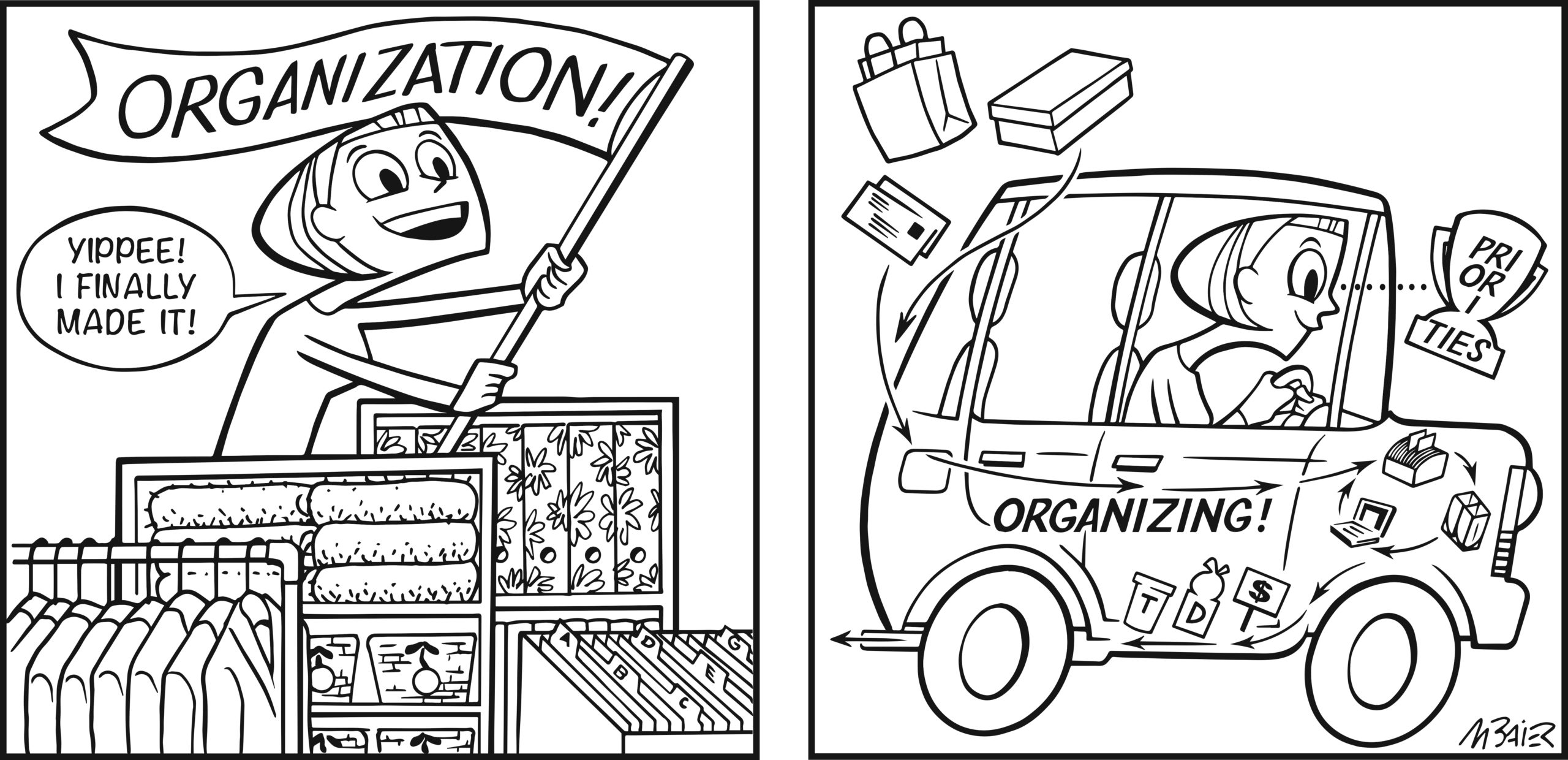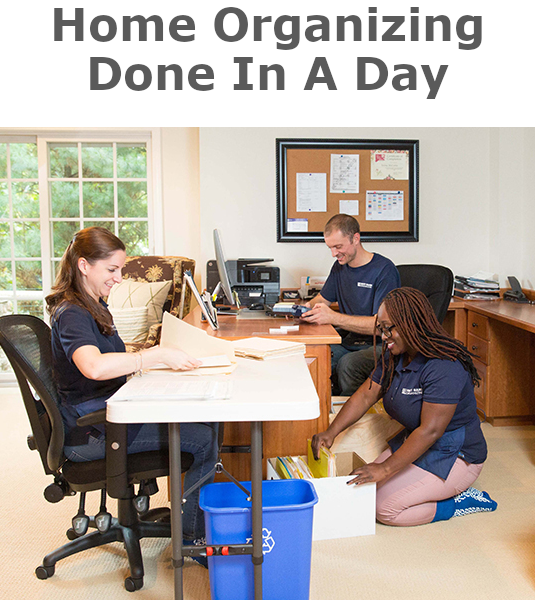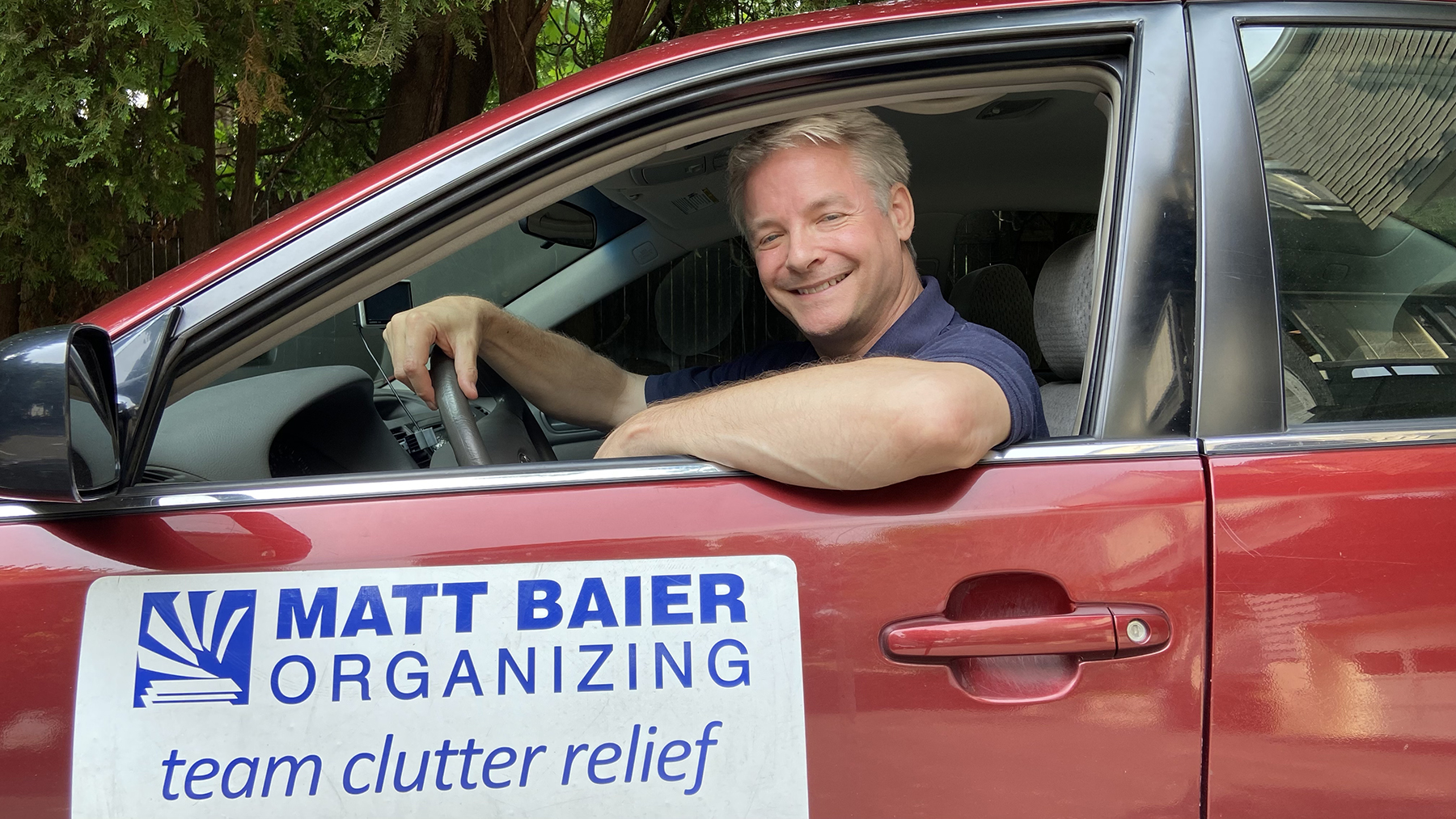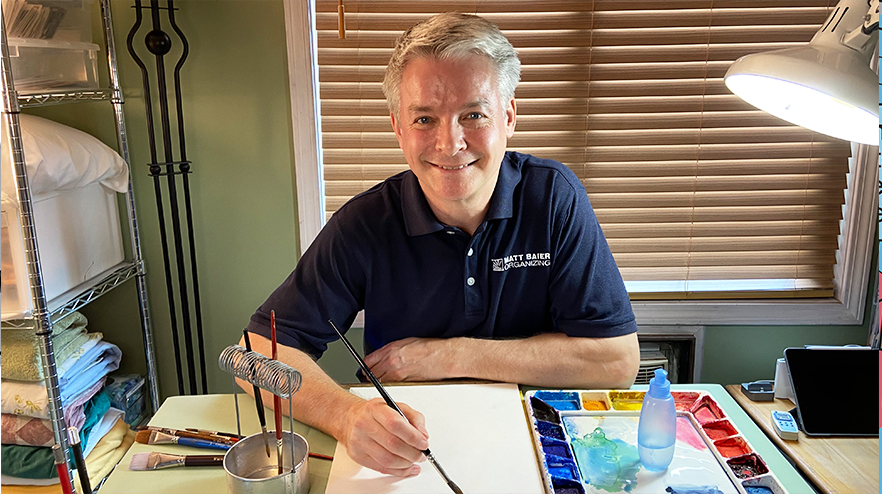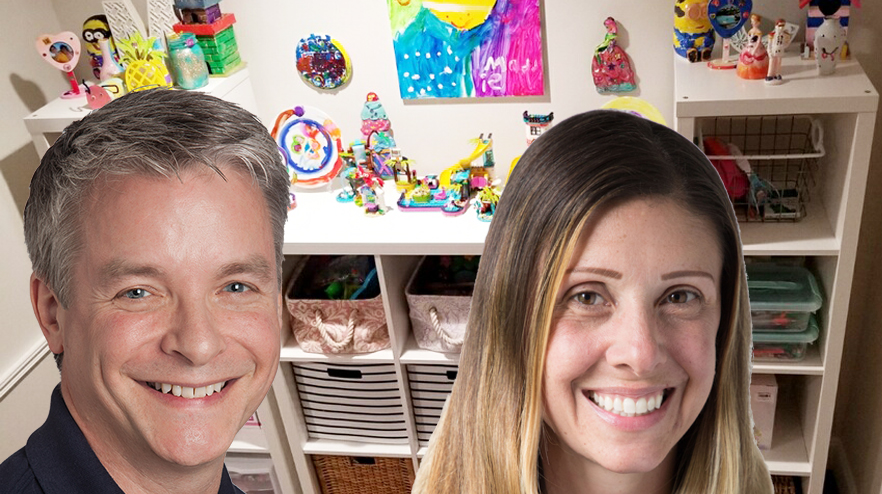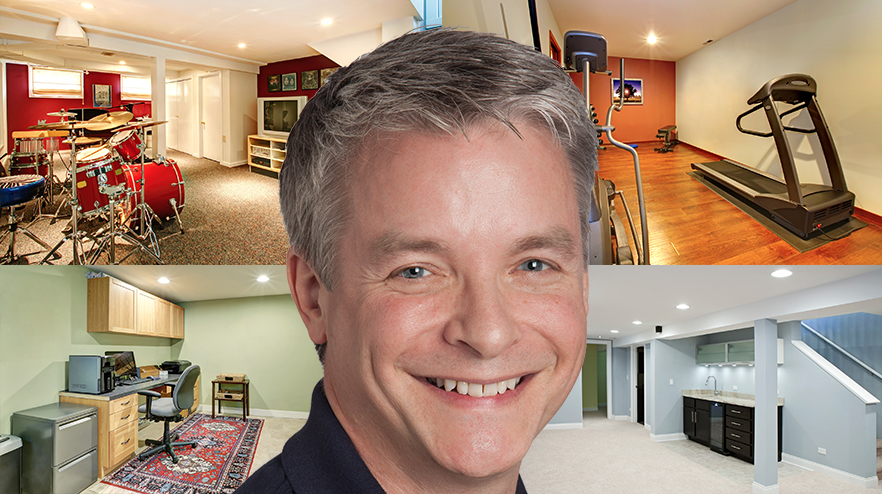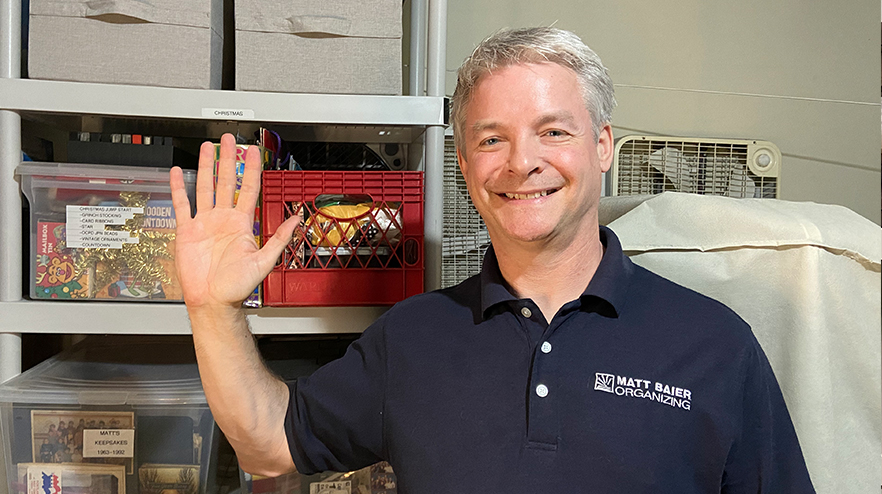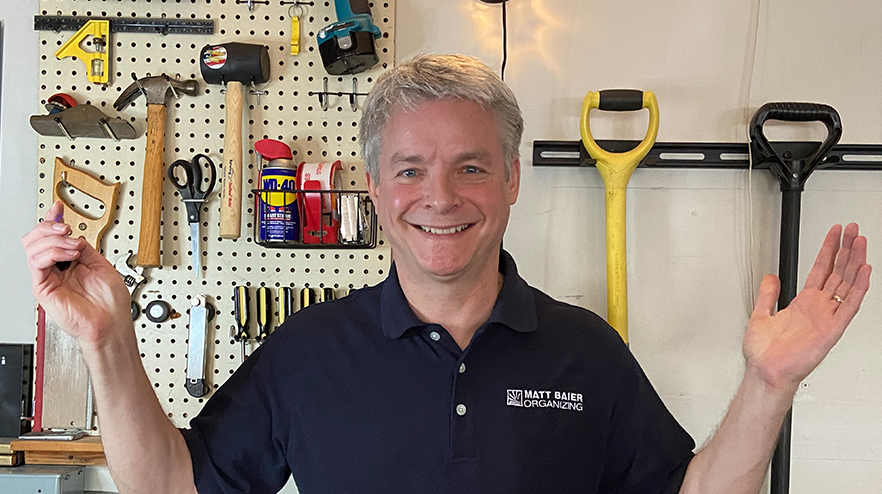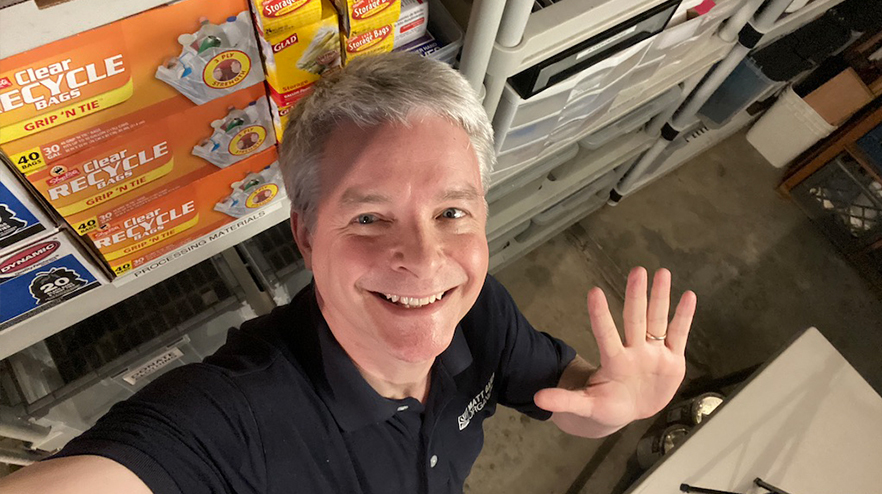What follows is an excerpt from my new book, coming out later this month, “The Circulation Solution: The Ultimate Organizing Approach For Lasting Clutter Relief.” This section comes right after the introduction, where I talk about why it is so hard to stay organized today, the definition of clutter, and why to get organized. In this excerpt I get into the heart of the book: defining “The Circulation Solution.”
I rarely get contacted about our organizing services because someone wants to get a little more organized. By the time the potential client picks up the phone to call, she has had it. She is overwhelmed with clutter and doesn’t know where to begin. She is desperate to be rescued from the chaos and to be delivered to a state of organization.
Here is the most important thing to realize about achieving lasting clutter relief:
“Organization is not a destination, but the vehicle you drive to take you where you need to go.”
If, amid your piles of clutter, you imagine a place where everything is neat and color-coded and looks like the pages of Real Simple Magazine, I may be about to disappoint you. You cannot arrive at this place and stay in this place without work. While there are more devices available today that are designed to automate tasks, there is no such thing as an organizing system that is so good that it works without your participation.
The good news is that although work is unavoidable, it doesn’t have to be hard work. It just requires the right vehicle. That vehicle is the Circulation Solution. This vehicle is motorized by one simple approach:
“Circulation Prevents Accumulation”
So what exactly do I mean by circulation prevents accumulation? It is this. To stay truly organized and clutter free, we need to have a plan for all the stuff in our lives—whether it’s in our homes, our offices, or our schedules—to move forward in a series of manageable, reliable stages.
This is a very natural concept. The model for this already exists in our bloodstream. In order for blood to flow freely, it needs to flow through a series of valves that open and close. There are seven steps in the blood flow of your heart. These valves represent manageable, reliable stages. Problems arise when there is a clot in the arteries, which blocks the flow of blood to the heart. This causes a heart attack, where your whole system shuts down. When there is an excess of stuff in our environment (clutter), it causes our organizing systems to shut down. In fact, the word “clutter” comes from the Middle English word “clotter,” which means to clot.
If the organizing approach of “a place for everything and everything in its place” is not working for you, it’s probably because it is too static or too rigid. A plan for movement is the key. To demonstrate how circulation prevents accumulation works, I will start with an example of a process you are probably already quite familiar with.
Dishes
Our everyday dishes start in our kitchen cabinet. We know we can reliably find them there, when we are ready to prepare a meal. Food prepared on our kitchen counter is placed on these dishes, then they are brought to the dining table where the food is eaten. When these dishes are emptied, they advance to the sink where they are washed, then to the drying rack where they dry, and finally they are returned to the cabinet so the cycle can begin again, reliably.
If any of these manageable, reliable stages break down, the whole system can break down. If the dishes don’t get washed, the sink becomes unus- able. Maybe they start to overflow on to the counters and food becomes difficult to prepare. After a couple of days, you run out of dishes and you find it easier to spend money on dining out. One day’s worth is manage- able, but three? Not so much.
Now you are probably thinking, “Yeah, but I’VE got a dishwasher.” These days most of us do, but that’s a great example of a piece of modern technology that is not necessarily making your life easier. If you have a family or a group eating on those plates then it makes perfect sense to load and run a dishwasher every day. However, if washing dishes becomes something that is regularly postponed because you are one or two persons waiting to fill a dishwasher, then it becomes a task that is unreliable. There’s no mug in the cupboard for your coffee because they are all waiting in the dish- washer until it is fully loaded.
Circulation is about movement and that movement is dependent upon a plan for manageable and reliable stages.
Most of us have such a plan for our dishes. The answer to lasting clutter relief is to have a plan like this for everything.
•••
The purpose of this book is to introduce a new organizing approach, not another how-to-organize book. That said, I will be offering some specific tips to make these concepts a reality. I am not going to attempt to provide a tip for every single organizing challenge that’s out there. Instead, I want to inspire you with this approach so that you are able to recognize the organizing solutions that make the most sense for you. I am also highlighting my favorite organizing principles in gray boxes, so look out for those. OK, let’s get organized!
Please Share With Your Community

